We may earn money or products from the companies mentioned in this post. This means if you click on the link and purchase the item, I will receive a small commission at no extra cost to you ... you're just helping re-supply our family's travel fund.
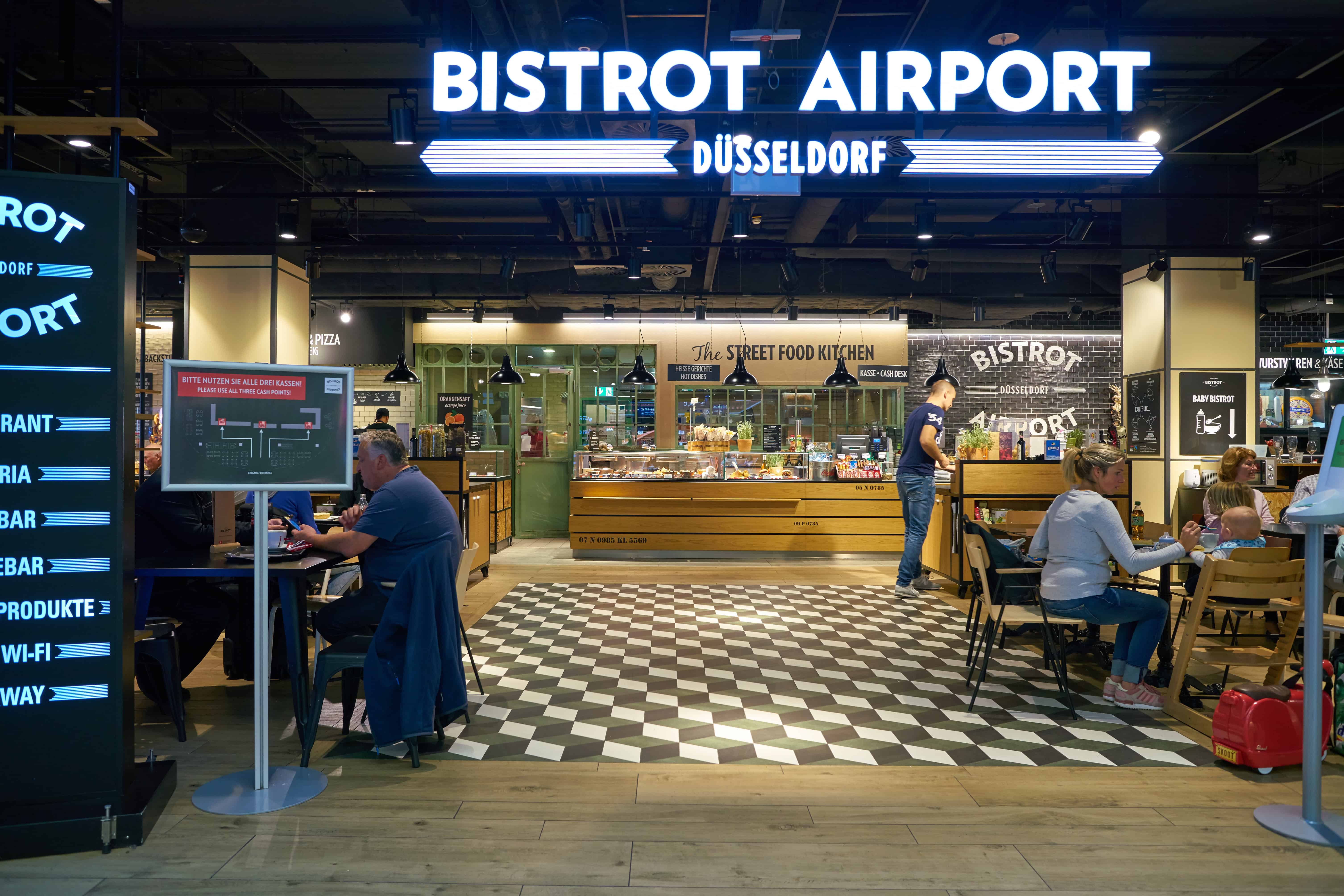
Airport food promises comfort at the exact moment travelers feel rushed, tired, and hungry. Behind the glowing menus and grab-and-go coolers, though, many “harmless” favorites rely on legal shortcuts that trade fresh ingredients for long shelf life and quick assembly. Labels packed with vague terms and additives keep lines moving while hiding how often meats are reformed, oils are reused, or flavors come from labs, not kitchens. The food is legal, but knowing what goes into it can change how it tastes.
Heat-Lamp Breakfast Sandwiches

That comforting egg-and-sausage muffin often starts frozen, then spends hours under a heat lamp. The “egg patty” can contain stabilizers, gums, and flavoring to keep it from weeping or turning rubbery, while the sausage may use restructured meat, fillers, and preservatives to survive storage and reheating. Cheese slices labeled as “cheese product” or “cheese food” can legally include added oils and emulsifiers, creating a melt that owes more to engineering than a dairy.
Concourse Hot Dogs And Sausages
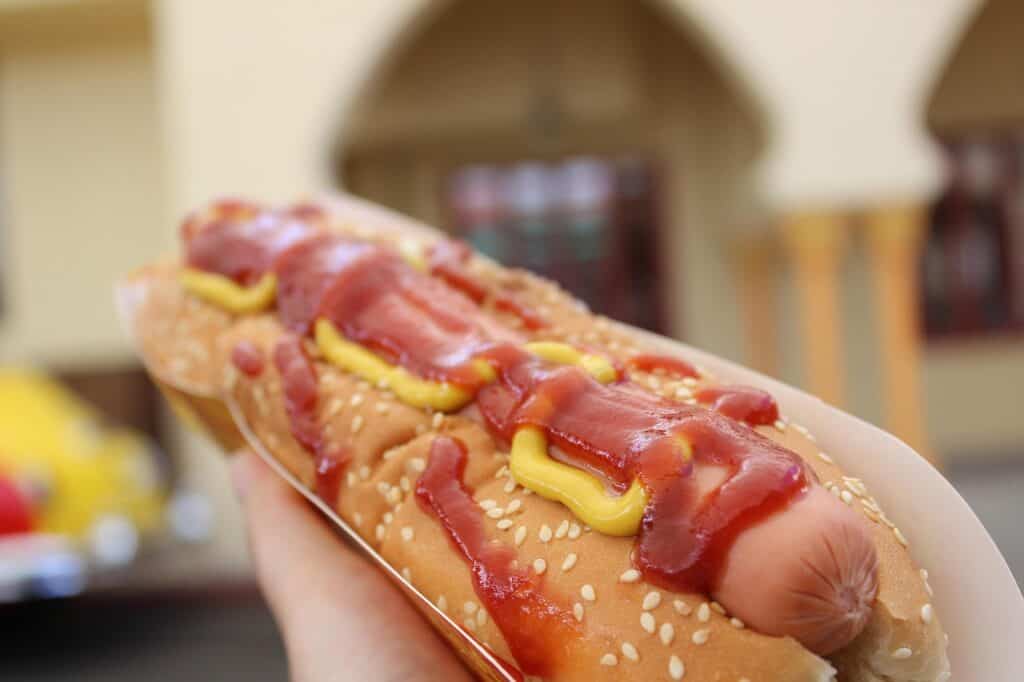
Airport hot dogs lean hard on processed meat rules. Many use mechanically separated chicken or pork, a paste created by forcing carcasses through a high-pressure sieve that drags tiny bits of bone, tendon, and connective tissue into the mix before it is finely ground and seasoned. Nitrates and nitrites help preserve color and flavor, while “natural flavors” can mask inconsistencies between batches. The result tastes uniform, but only because the stranger parts have been blended past recognition.
Fried Chicken Nuggets And Strips
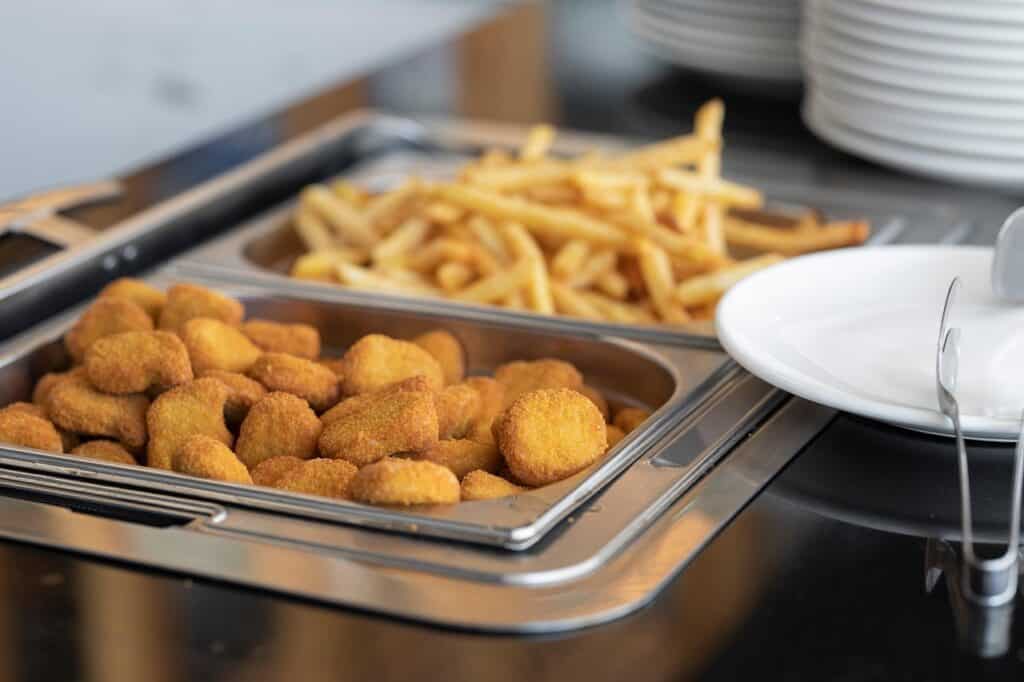
Chicken nuggets and strips in airport food courts rarely resemble whole cuts. Instead they often rely on minced or reformed meat bound with starches, proteins, and phosphates to hold moisture and extend shelf life. A thin layer of breading and seasoning helps disguise the uniform interior and absorbs oil from fryers that may handle multiple products all day. Labels might mention “flavorings” rather than listing all components, letting complex ingredient cocktails hide behind friendly menu names.
Pre-Packaged Salads With Creamy Dressing
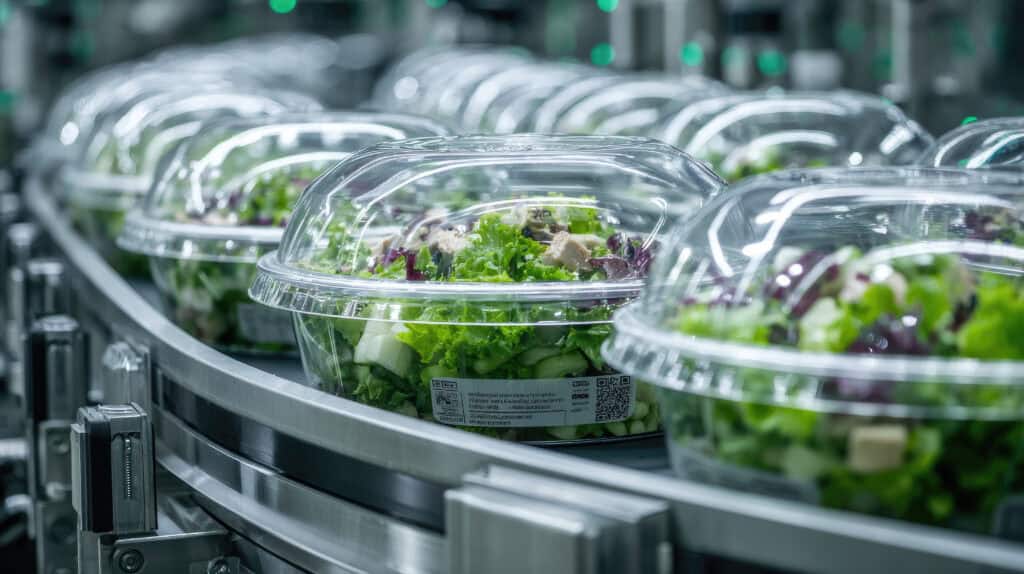
Those “fresh” salads in plastic clamshells can sit longer than most travelers realize, thanks to modified atmosphere packaging and chemical washes that keep greens looking crisp. The real surprises, though, usually lurk in the attached dressing packet. Creamy dressings often rely on soybean oil, gums, corn syrup, and flavor enhancers instead of simple emulsions, while the ingredient panel tucks many of them under umbrella terms like “spices” or “natural flavors.” The vegetables may be clean; the sauce is another story.
Convenience Sushi And Poke Bowls
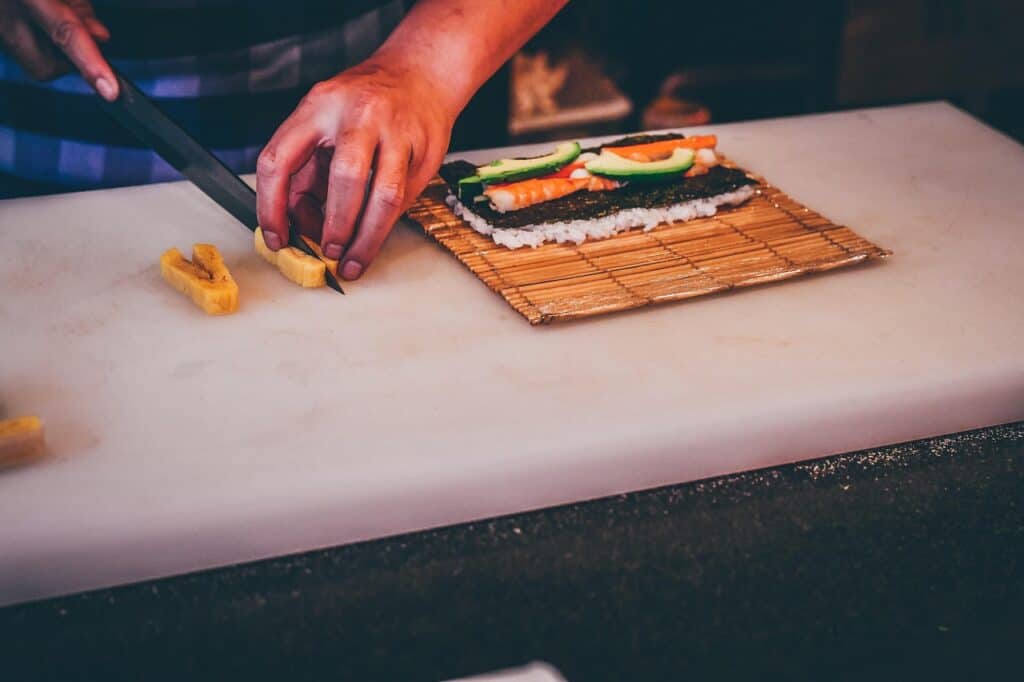
Airport sushi and poke bowls lean on heavy chilling, sauces, and textured toppings to cover how long ingredients have been traveling before they ever reach the concourse. Fish can be previously frozen and glazed, with added preservatives to manage color and odor, while crab-style fillings may be surimi made from processed white fish, starch, and flavorings. Soy sauces, mayonnaise blends, and spicy dressings carry stabilizers and sweeteners that stretch shelf life and keep older rice from feeling dry.
Over Sized Bakery Muffins

The comforting blueberry or chocolate chip muffin by the gate is often closer to cake engineered for storage than to something baked that morning. Industrial muffins typically rely on refined flour, cheap vegetable oil, emulsifiers, and artificial flavors, with fruit content boosted by “flavored pieces” made from sugar and concentrates rather than whole berries. To keep them soft for days, bakers may add gums and preservatives, all of which can sit quietly behind familiar words like “baked goods” on display tags.
Yogurt Parfaits With Crunchy Toppings
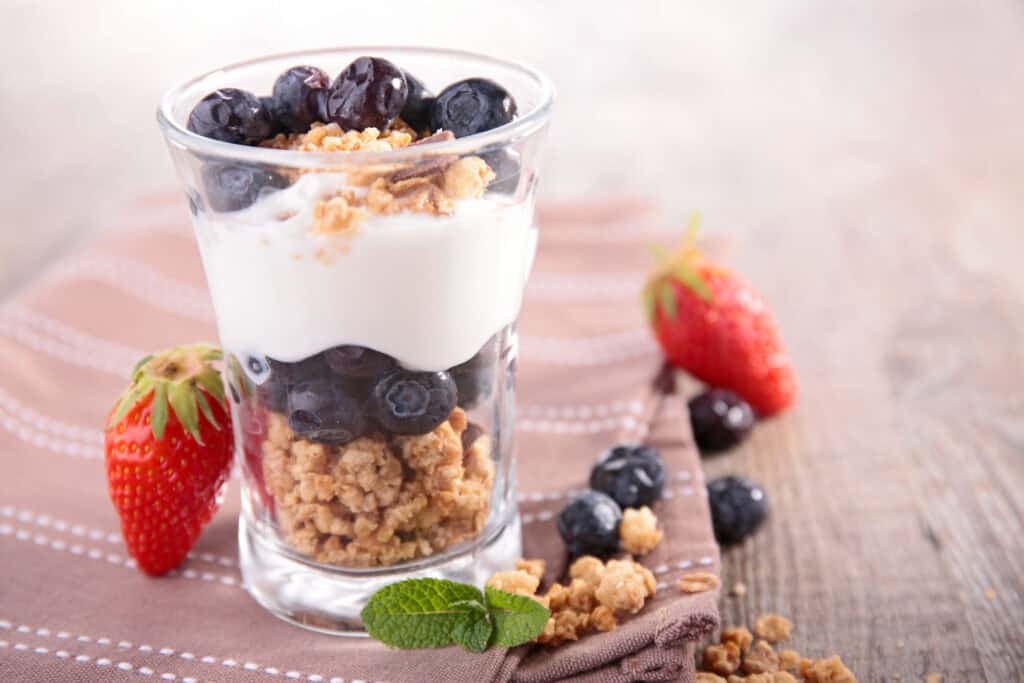
Yogurt parfaits look like the healthy option in a sea of greasy food, yet the ingredient list often tells another story. The yogurt itself can be sweetened and fortified with thickeners, stabilizers, and “natural” or “artificial” flavors, while the granola topping may carry added oils, sugars, and preservatives designed to keep clusters crispy in sealed cups. Fruit layers are frequently more syrup than produce, with color and flavor boosted by concentrates and additives that never get mentioned on the menu board.
Pizza Slices Under Heat Lamps

Airport pizza survives long shifts by combining dough enhancers, cheese substitutes, and shelf-stable toppings. The cheese can be a blend of real dairy and starch-heavy shreds that melt predictably and tolerate reheating, while pepperoni and other meats rely on nitrates, nitrites, and smoke flavoring to retain taste after multiple warming cycles. Sauce formulas favor concentrated tomato products, sugar, and acids over fresh ingredients, turning each slice into a carefully calibrated mix that hides its age behind bubbling, glossy cheese.
Pre Made Deli Wraps And Sandwiches

Grab-and-go wraps stay visually appealing far longer than a homemade sandwich would. Commercial deli meats often combine restructured cuts, binders, and added water, then lean on phosphates and flavorings to keep slices moist. Tortillas and flatbreads may include conditioners to prevent cracking, while spreads like “chipotle mayo” or “herb aioli” carry long ingredient lists of stabilizers and preservatives. Packaged together in chilled cases, these elements can sit for days while still looking deceptively bright and crisp.